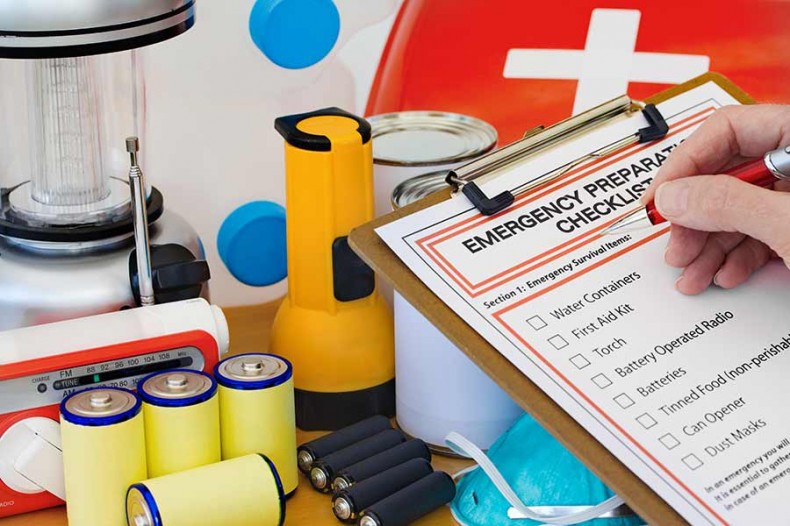When storms are forecast, you can better prepare yourself and your family with a little planning.
Start with these six tips for making ready:
1 Have enough disaster supplies for 2 weeks ready
2 Keep items in airtight plastic bags
3 Replace stored food and water every six months
4 Rethink your kit and family needs at least once a year (Replace batteries, update clothes, etc.)
5 Ask your physician or pharmacist about storing prescription medications
6 Prep your disaster supply kit!
A complete set of supplies contains a variety of helpful items for every disaster. Fill your kit using this list, compiled from suggestions by the American Red Cross and Center for Disease Control.
Your disaster supply kit
- Emergency food & drinking water
- At least one change of clothes for every person
- Baby food, diapers & formula (if needed)
- Bar or liquid soap*
- Batteries
- Bleach (without lemon or additives)
- Books, magazines, cards & games
- Butane lighters
- Cash & credit cards
- Camera
- Car keys
- Clock (non-electric)
- Cloth face coverings*
- Cooler (with ice)
- Disinfecting wipes*
- Duct & masking tape
- Fire extinguisher
- First-aid kit
- Flashlight
- Grill or camp stove
- Hand sanitizer*
- Lantern with extra fuel (after storm has passed)
- Manual can opener
- Medicines, glasses or contact lens supplies
- Mosquito repellant
- Personal identification
- Pet food
- Phone numbers of places you could go
- Plastic trash bags
- Radio (battery-operated) or TV
- Sleeping bags, pillows & blankets
- Shampoo
- Sturdy shoes
- Toilet paper & towelettes
- Tool kit including hammer, crowbar, nails, saw, gloves, etc.
- Water purification tablets (available at drug stores)
* Recommended by the CDC to help prevent the spread of the coronavirus and other germs
Want to print this emergency supply list?

